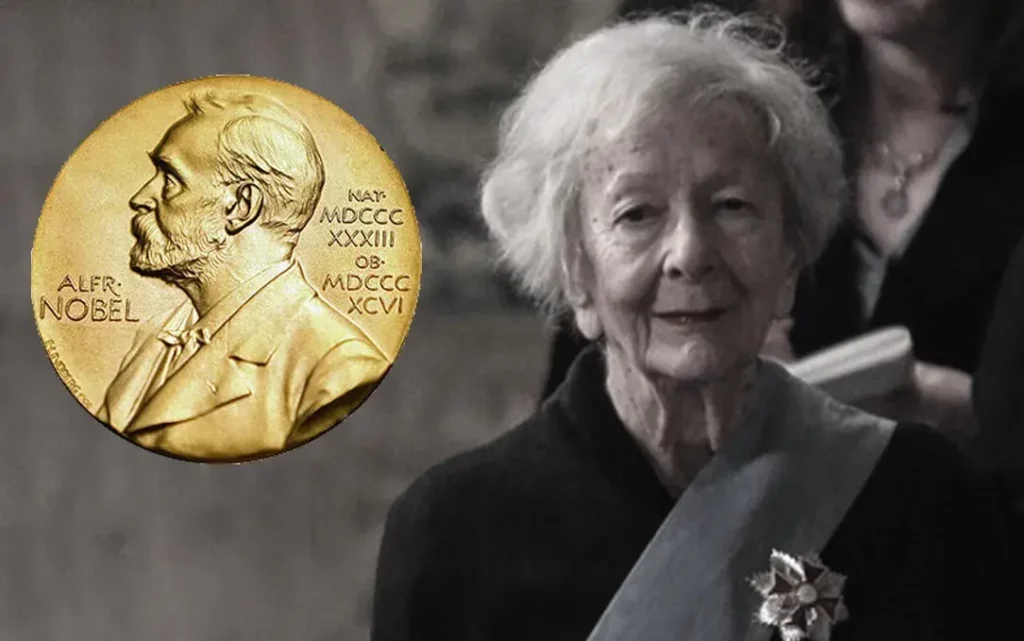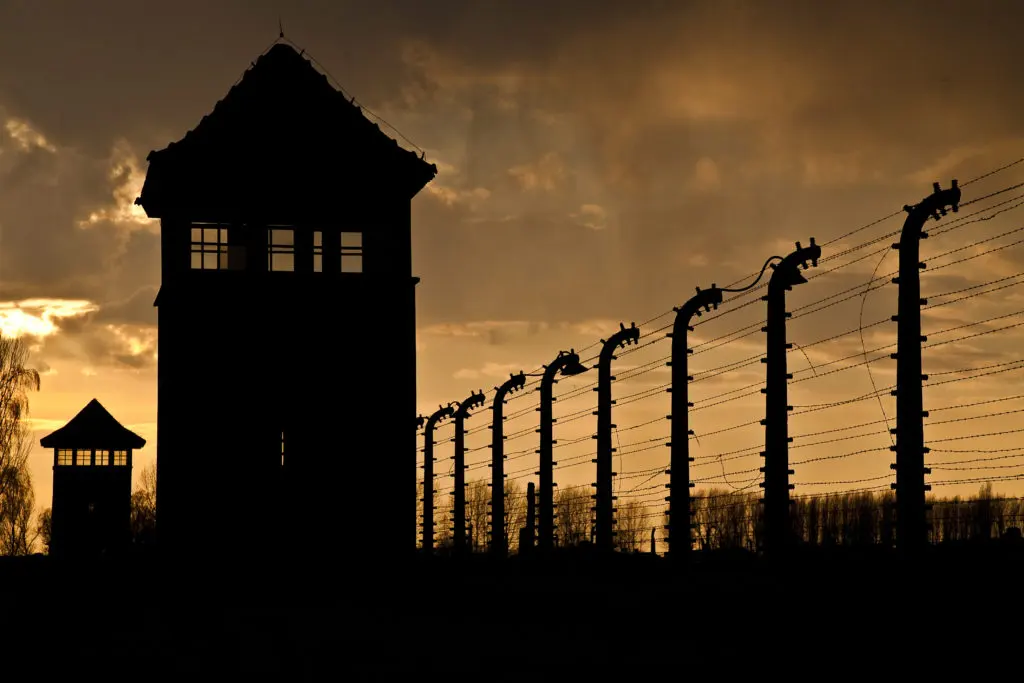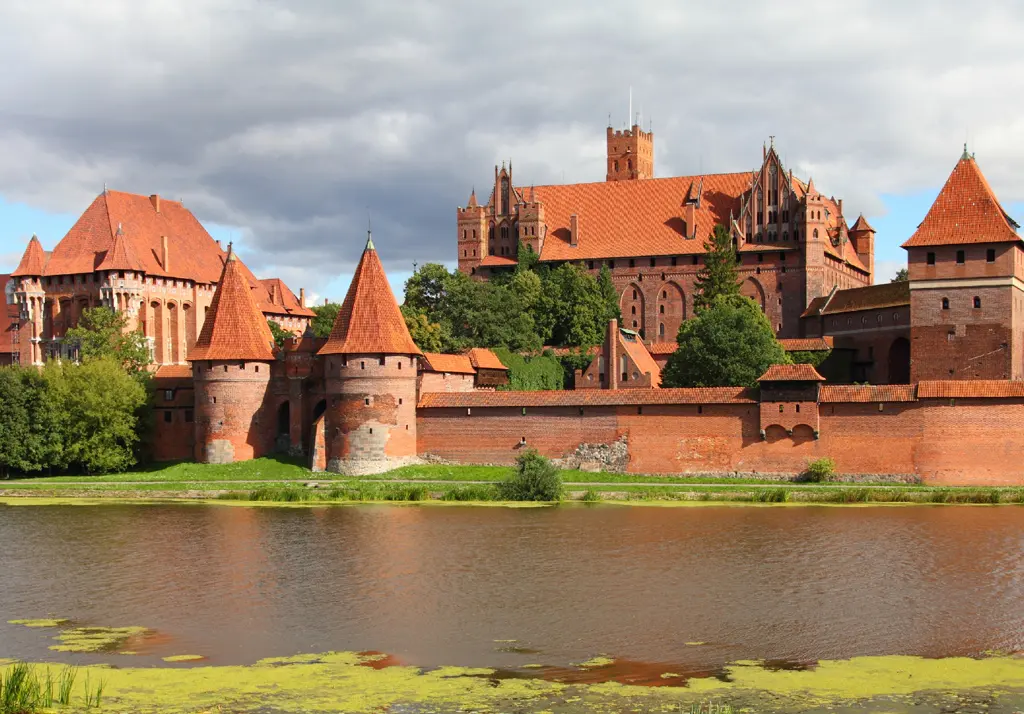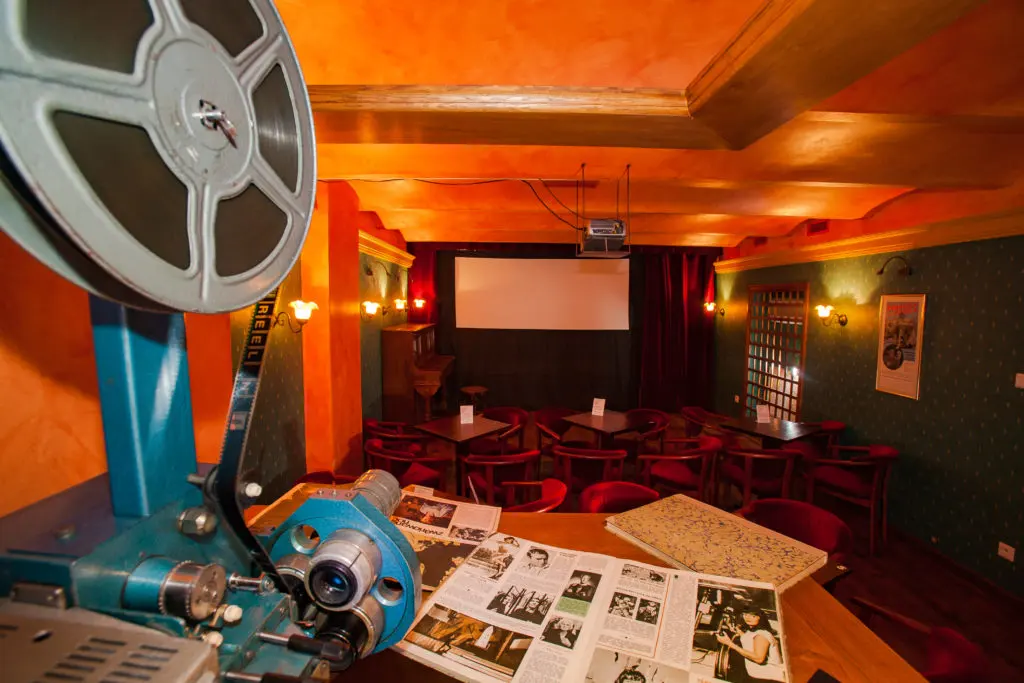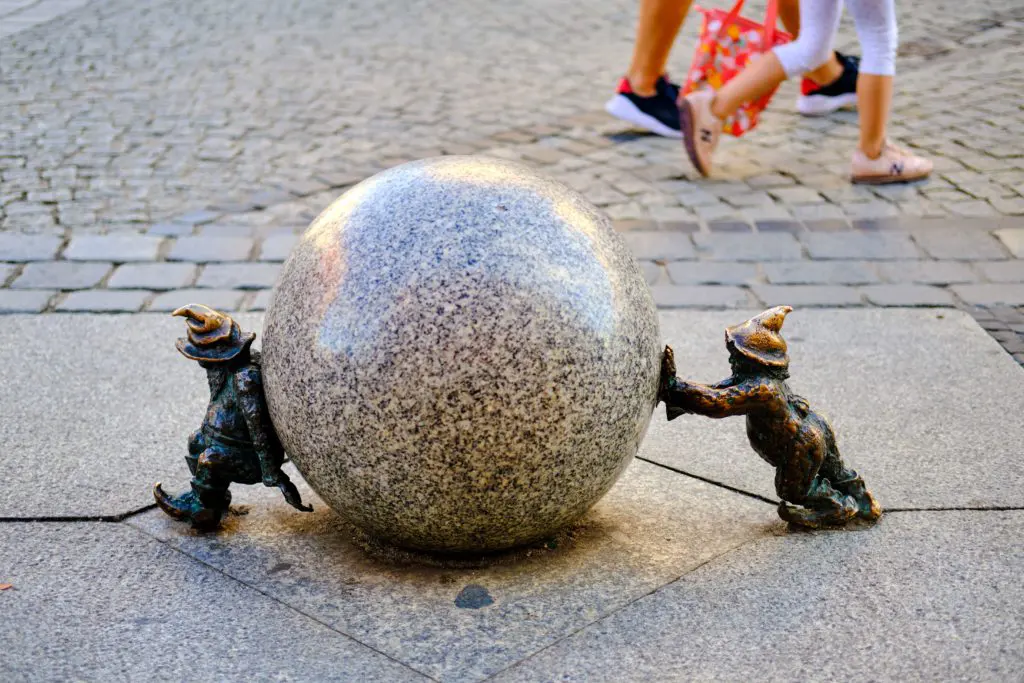Escape. Explore. Experience.
Guided group experiences
Tailored tours for diverse interests
POLAND • GERMANY • CZECHIA • SLOVAKIA • AUSTRIA • HUNGARY • ROMANIA • LITHUANIA • LATVIA • ESTONIA
Did you know?
Poland has lots to offer, beautiful untouched nature (sea, lakes, rivers, forests, mountains), interesting history and hundreds of monuments. It has 32 places inscribed on the UNESCO World Heritage list and 11 UNESCO Biosphere Reserves. But there is much more to discover. Did you know?
The name of Poland comes from the name of the tribe that inhabited this land – Polanie. The word itself applies to people who live outdoors.
 Life staging in an early medieval settlement
Life staging in an early medieval settlement
With a land area of 312,685 km², Poland is among the 10 largest countries in Europe, surpassing Italy or Great Britain with its territory.
With the population of 38.2 million it is a 38th most populous country in the world. Warsaw, the capital, is the largest city in the country.
Poland has belonged to NATO since 1999, and to the European Union since 2004, but maintains its local currency, the Polish zloty (PLN).
Poland belongs to the Schengen Zone in which 26 European nations have recognized the abolition of their internal borders with other member nations for the free movement of people, goods, services and capital.
Poland is located in the heart of the European continent: it is precisely here that the first calculated geometric center of Europe is located.
Poland has 17 Nobel Prize winners, 4 Peace Prize winners and 5 Nobel Prize winners for literature.
Poland is the largest exporter of amber in the world.
The Polish constitution was the first in Europe and the second in the world.
Poland is among the countries that consume the most beer, it is estimated that an average citizen drinks 99 liters of beer per year.
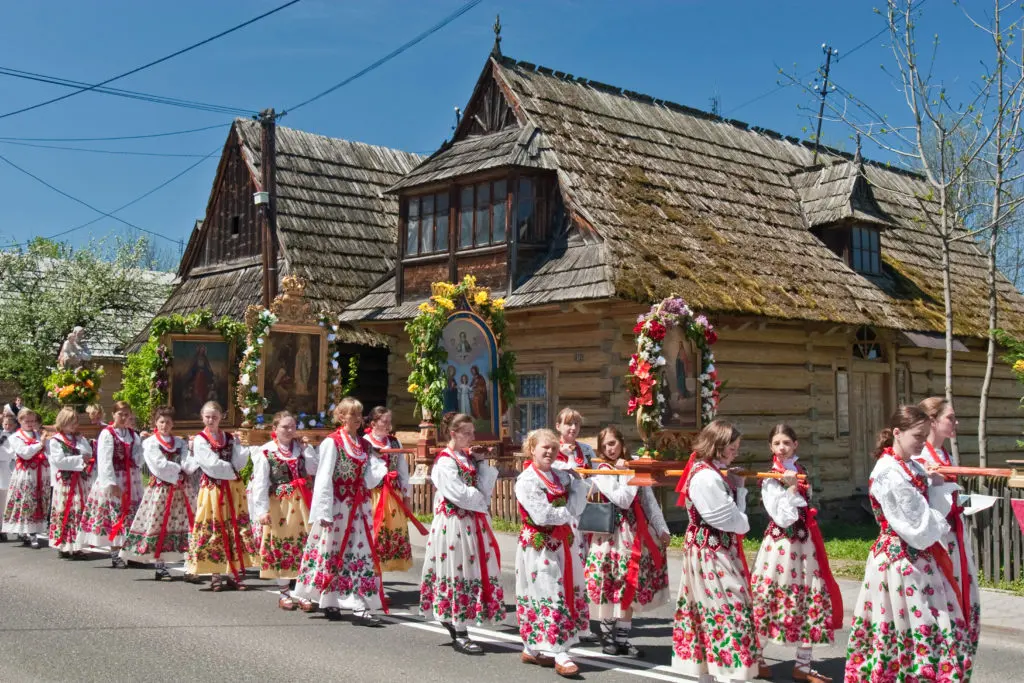 Chotomów – Corpus Christi procession
Chotomów – Corpus Christi procession
Poland is the most religious country in Europe.
It has 9,000 lakes and is the second country in Europe with the most lakes.
Poland saved 450,000 Jews from death during the Holocaust.
25% of Europe’s storks are found in Poland. During migration, storks leave these areas and travel to Africa. Between the months of March and April, the storks will return to Europe on a journey that takes around 49 days.
90% of Poles have completed at least secondary education.
Malbork Castle (Marienburg) is the world’s largest castle built of brick. It is built in gothic style, covers an area of 21 hectares, and is one of the most impressive of its kind in Europe.
Wieliczka, apart from being one of the most beautiful places in Poland, is the only salt mine in the world that has been in operation since the Middle Ages. It was declared a UNESCO World Heritage Site in the first list made in 1978.
Warsaw is the city of contrasts. Today’s old town is not the real old town from before the war. The original was completely bombed in the 1940s and the Poles rebuilt it using specific paints.
The 150,000-hectare Białowieża Forest is the oldest and wildest forest in Europe. Some 800 European bison live there, the heaviest animals on the continent. The forest is protected as a UNESCO World Heritage and UNESCO Biosphere Reserve.
The typical traditional not official food is Zapiekanka. It’s a baguette cut in half, topped with cheese and mushrooms and sprinkled with garlic and mayonnaise… and lots of tomato sauce.
Marie Curie, the woman who discovered Polonium and Radium, was not French, but Polish. Her name was Maria Skłodowska before she married a Frenchman named Pierre Curie. She was the first woman to win a Nobel Prize, the first person and only woman to win twice, the only person to win a Nobel Prize in two different sciences.
Poland is among the countries that consume the most beer, it is estimated that an average citizen drinks 99 liters of beer per year.
The largest Market Square in Europe is located in Poland -> Krakow.
The founder of the Max Factor cosmetics brand was a Pole – Maksymilian Faktorowicz.
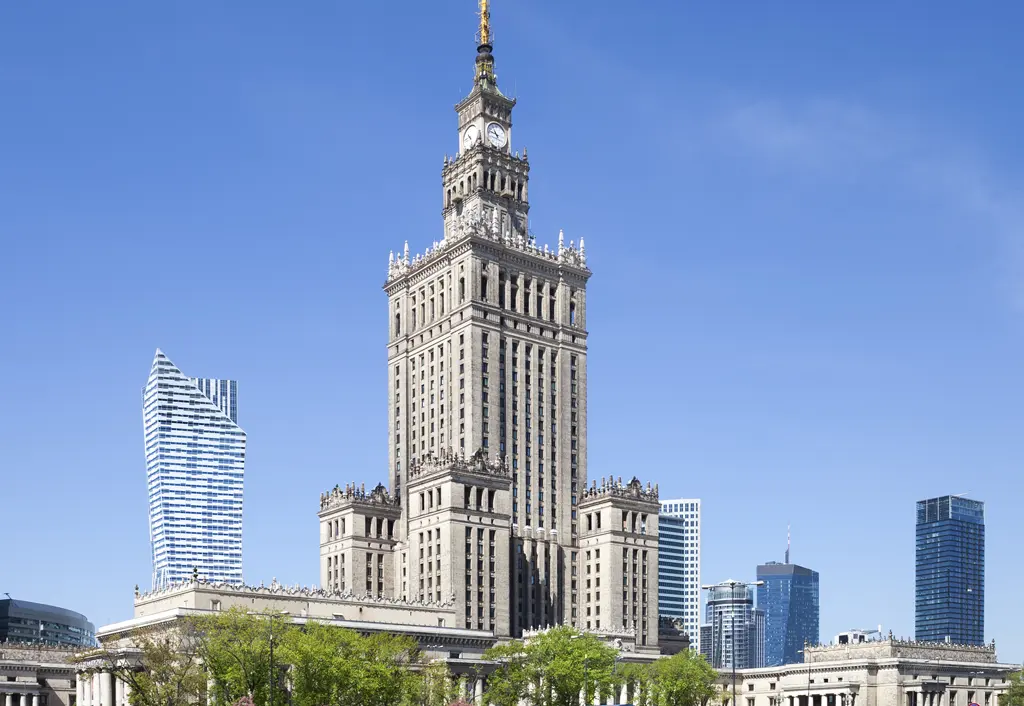 Palace of Culture and Science in Warsaw
Palace of Culture and Science in Warsaw
The second largest clock in Europe is located in the Palace of Culture and Science in Warsaw. It is 6.3 meters in diameter and at the time of its opening in 2000 it was the tallest clock in the world.
The President of the Republic of Poland awards a medal to couples who have been married for at least 50 years.
The “Pionier” cinema in Szczecin, in operation since 1909, is the second oldest operating cinema in the world.
Poland is one of the largest bus producers in the European Union.
The 5 zloty coin was recognized in 1996 as the most technologically advanced circulation coin in the world.
Poland is the largest producer of apples in Europe.
Poland has the largest mineral water deposits in Europe.
Gdansk was the first target of military actions taken by the German army in 1939. The exact location of the first battle of World War II was Westerplatte, a small peninsula a few kilometers from the city center.
Gdansk is the city where the Solidarity union stood up to communism in Poland and ended up achieving the change to a democratic regime in the country.
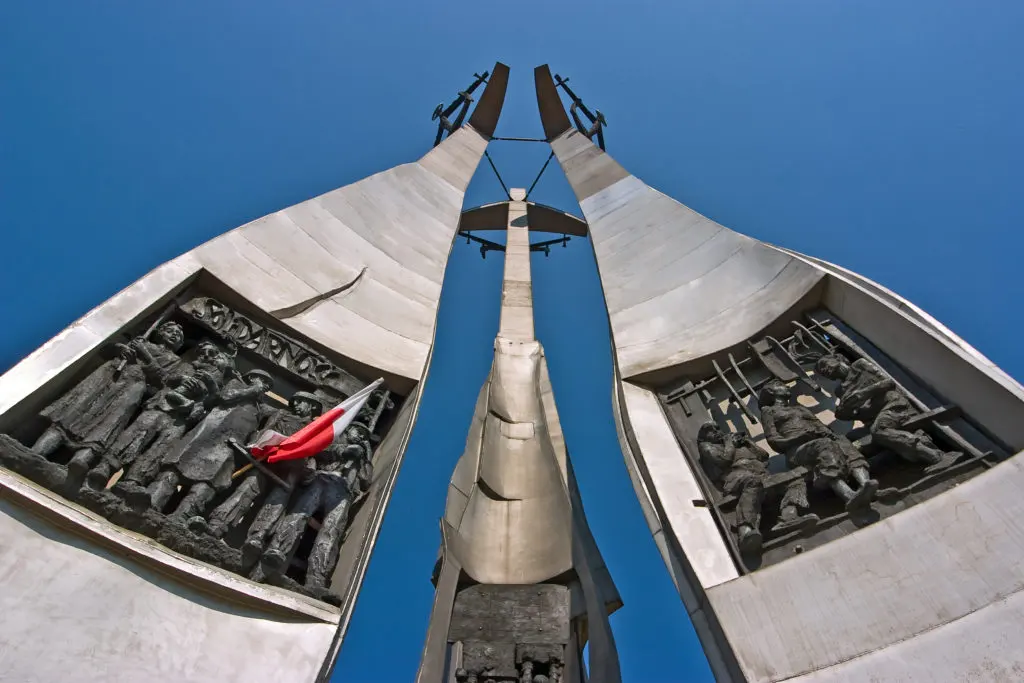 Gdańsk – Monument to the Fallen Shipyard Workers of 1970
Gdańsk – Monument to the Fallen Shipyard Workers of 1970
Zamosc – city built on the Italian concept of “a perfect city”, it has kept much of the typical Paduan atmosphere being one of the best examples of renaissance.
Torun is the birthplace of Nicolaus Copernicus, the author of the heliocentric theory of the Solar System.
Wroclaw is the city inhabited by gnomes – there are more than 380 bronze gnome statuettes scattered throughout the city center of Wroclaw reflect the popular Polish tradition of “Krasnoludek”, a kind of elf that fights bad luck.
Zabkowice Slaskie has the most inclined tower in Poland. With its 34 meters of hight, it leans 214 cm. But there are 6 other cities that have a similar phenomenon.
From the 11th century until the beginning of World War II, Poland was known as the cultural and spiritual center of European Jewry. Many of the Polish Jews gained fame throughout the world.
“Obwarzanek” (bagel) – is a typical Krakow pastry, which was brought by the Jewish population to North America and is currently extremely popular mainly in the New York and Montreal areas.
In Poland we use power plug Type C.
The best season to travel is April – October and December due to the wonderful Christmas markets and the illumination that adorns many cities. However, for lovers of winter sports, the months of December – March are recommended to practice snow sports.

